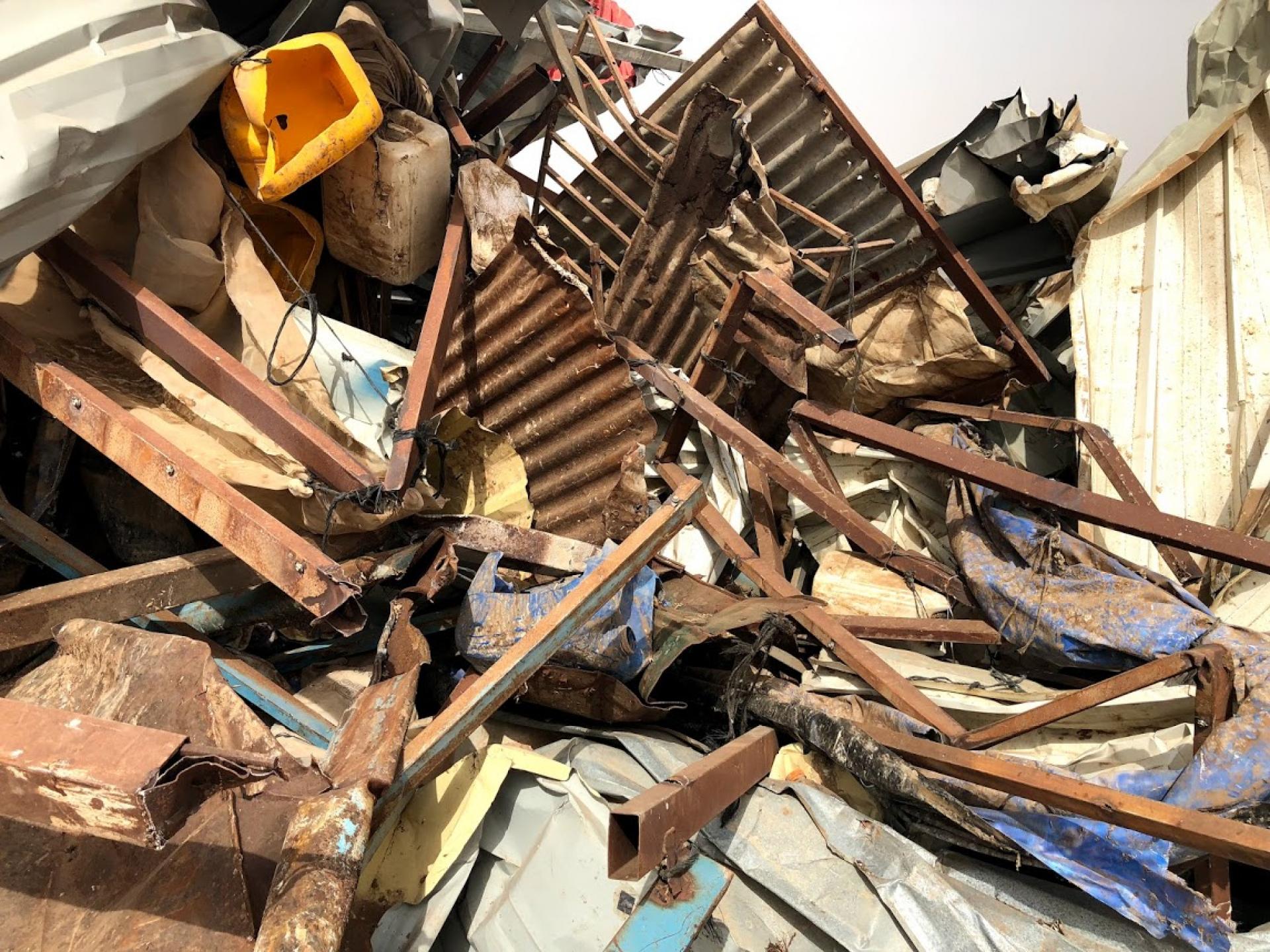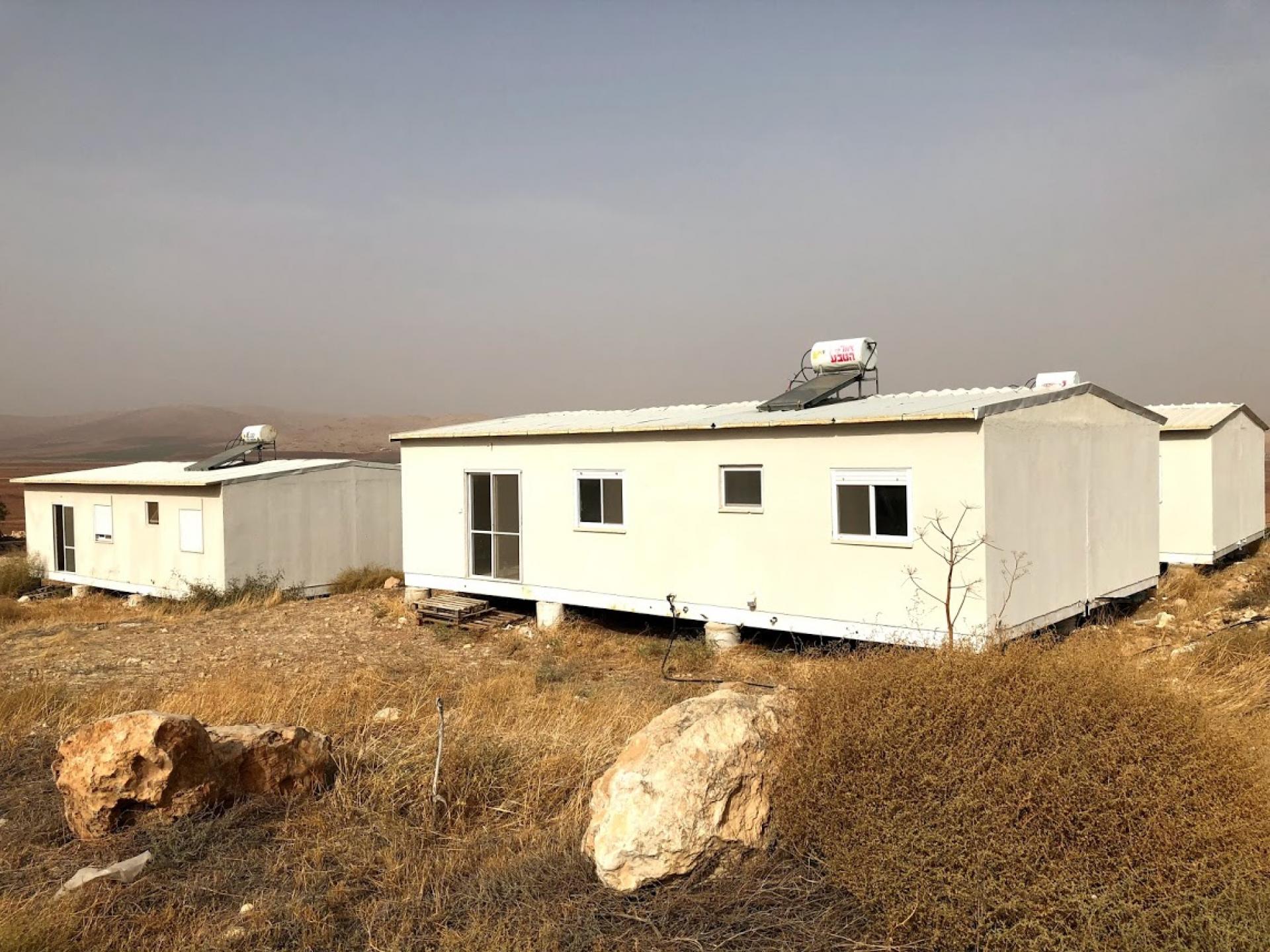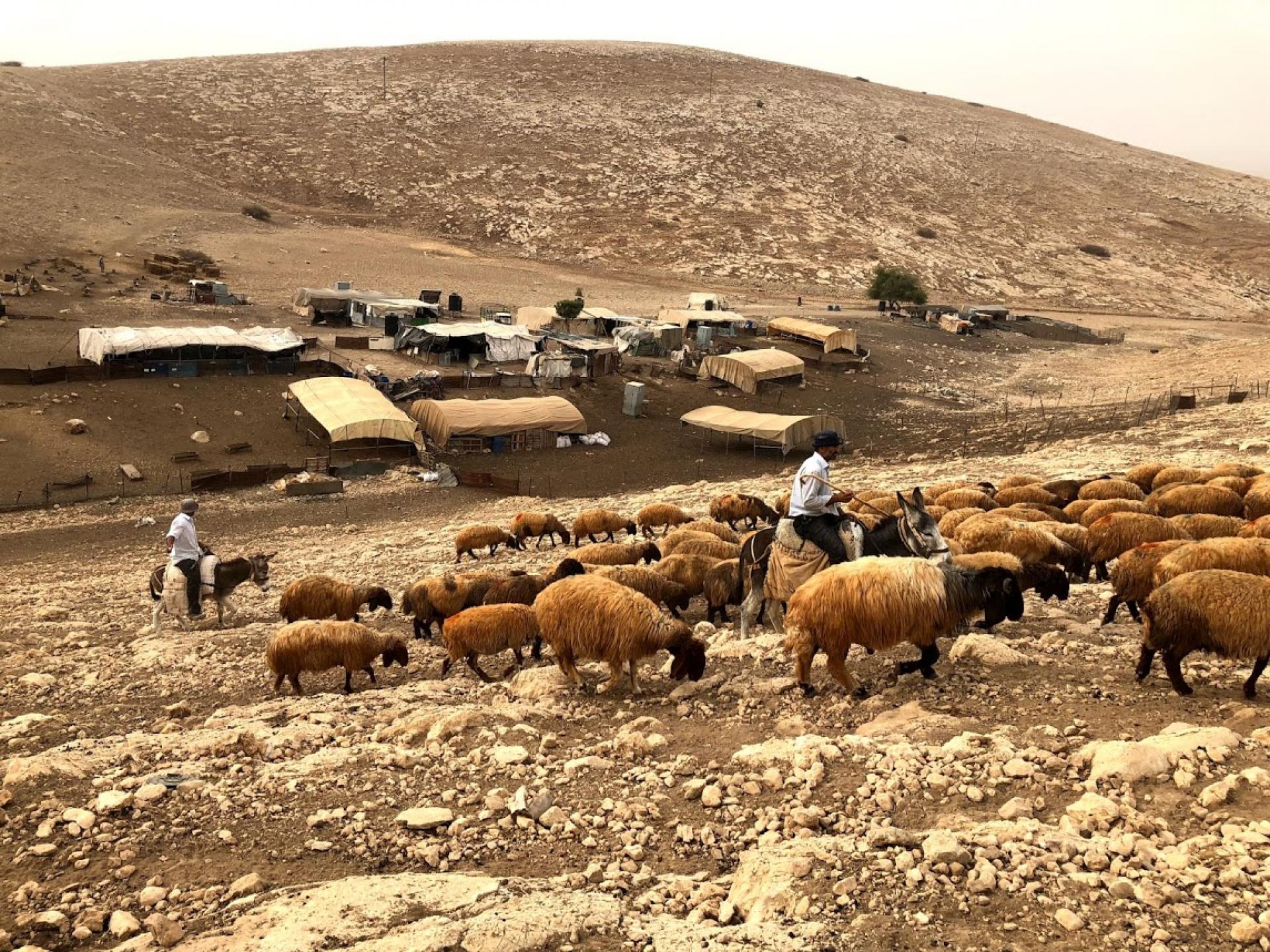The Palestinian Jordan Valley – Demolitions for Palestinians, Construction for Jews



Summary accompanying shepherds around Samra; visiting families at Khalat Makhoul – Amer Bsharat’s family whose home was demolished by the Israeli army a week ago; photographing new caravans at Beq’aot settler-colony; visiting a family at Fasail.
Early in the morning we visited the Daragma family who lately returned to their home at Samra. We joined their daily chores that began with feeding their flock – sheep and goats, about 600 heads. Two brothers with families and their father returned, while the rest of the family remained in Tamoun for a while. We separated the young lambs from their mothers, and after the flock ate, so did we and the shepherds – a typical local breakfast. Afterwards, in desert pace, we accompanied the flock to pasture. We climbed up to the army base area Umm Zuka, and towards the illegal outpost next to it. It is a scenic hilly area, but still quite arid. The sheep and goats, their heads bowed, eat whatever they can find and look for shade under each other’s tail…
Two shepherds on donkey-back and a sheep or two with resounding bells around their necks, hundreds of sheep and goats spread over the entire area and we can then have lengthy conversations with the shepherds, listen to their life stories, enjoy the view and hope nothing bad will happen. Since we had a busy day ahead, we cut our time at the pasture short and around 1 p.m. headed out to Al Hadidiya, where the army has demolished the dwellings of one family out of the several who are threatened by a constant demolition order. The family has moved into a nearby structure deserted by its former inhabitants, and also received some tents from the Red Cross. According to the women, the army let them have 10 minutes to get all their gear out of their home before demolishing it, and everything was moved to the neighboring encampment.
As we arrived everything looked in order. The odors of cooking in the kitchen, the owner’s two wives and a 2-year old daughter of one of them all sat with us and were glad to converse. The girl is still in shock from the eviction. The women, on the other hand, seemed oblivious. The owner too was smiling, as if accepting reality. Go figure…
Some preparations are made for corralling the livestock. At the moment it is still sitting in the sun, until shades will be erected. Imagine life as a wool-covered sheep in this searing hot region, without water and greenery.
Next to the demolished house surrounded by a fence is a green and luscious tree grove that the family has nurtured.
We proceeded into the Beq’aot settler-colony nearby, to photograph the latest construction. This community is naturally filled with all shades of green, the pool already in winter state, emptied of water.
From there we continued through the Jiftlik towards Fasail where the Bedouins live. We met one woman who gave birth to a baby girl shortly, and left her clothes and other things we had brought, hoping this would help a bit.
girl shortly, and left her clothes and other things we had brought, hoping this would help a bit.
“The mountains are higher on the way back...” (as the song goes), and the angle of the sun really made it look that way, but distance was reduced and we were back by 5 p.m.
